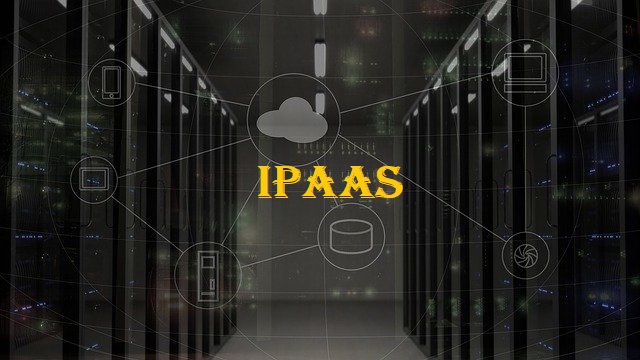Integration Platform as a Service (iPaaS) is a cloud-based platform that enables businesses to connect their on-premise and cloud-based applications and data. iPaaS provides a complete set of tools and capabilities for integration, including data integration, application integration, process integration, and API management. iPaaS also offers a variety of features and capabilities for governance, security, and management.
What is an integration platform as a service (iPaaS)?

In the past, businesses have had to rely on various disparate systems to manage different aspects of their operations. This can lead to several problems, including duplication of effort, lack of visibility and coordination between departments, and difficulty integrating new systems with existing ones. Integration Platform as a Service (iPaaS) can help solve these problems.
So, how does iPaaS work? Integration platform as a service is a cloud computing platform that allows users to integrate different applications and software to automate business processes. This can be done by connecting other software components or data sources within the platform. Generally, iPaaS providers offer a wide range of connectors or adapters that allow you to hook up various applications and services. Once connected, these applications can then be automated and triggered based on events or other conditions.
The beauty of iPaaS is that it provides businesses with a way to easily connect disparate systems without having to worry about the underlying infrastructure or compatibility issues. By using an iPaaS platform, companies can more quickly and easily create integrations between their critical systems, such as ERP, CRM, marketing automation, eCommerce platforms, etc., allowing them to streamline their business operations and improve overall efficiency.
What are the benefits of iPaaS?

iPaaS makes it easy for organizations to connect their systems by providing pre-built connectors for many popular applications and analytic databases. It also includes drag-and-drop tools for creating custom connectors. iPaaS solutions also offer monitoring and reporting tools so administrators can track the status of all integrations and troubleshoot any issues that may arise. The benefits of using IPaaS include reduced integration time, increased efficiency, reduced costs, and scalability.
For reduced data integration time, by using pre-built connectors and drag-and-drop tools, IPaaS minimizes the time it takes to integrate different applications and data sources. In terms of increased efficiency, with all systems integrated into one platform, employees can more easily access the data they need to do their jobs effectively. This leads to increased productivity and efficiency throughout the organization.
Reduced costs occur because iPaaS typically costs less than building an in-house integration platform from scratch. It also eliminates the need for expensive hardware, software, and maintenance contracts. Lastly, because iPaaS is a cloud-based solution, it can be scaled up or down depending on changes in business requirements or traffic levels.
How do you set up an integration platform as a service?
Setting up an integration platform as a service can seem daunting, but with the right tools and resources, it can be relatively straightforward. Here are the steps you’ll need to take to get your iPaaS up and running:
- Evaluate your needs. The first step in setting up an IPaaS is to evaluate your needs and determine what features and services you need. This will help you determine which platform is right for you and what type of subscription you’ll need.
- Choose a platform. There are a number of different IPaaS platforms on the market, so you’ll need to research to find the right one for your business. Compare features, prices, and customer reviews to find the best platform for your needs.
- Set up your account. Once you’ve chosen a platform, you’ll need to set up an account and configure your settings. This will include specifying your company information, adding users, and configuring your integration settings.
- Connect to your applications. The next step is to connect your applications to the IPaaS platform. This can be done by specifying the connection details for each application or using connectors provided by the platform.
- Configure your integrations. Now that your applications are connected, you’ll need to configure your integrations. This will include specifying the type of integration, the source, destination applications, and other settings required.
- Test your integrations. Once your integrations are configured, you’ll want to test them to ensure they’re working correctly. This can be done by running test cases or importing data into your applications.
- Deploy your integrations. Once you’ve verified that your integrations are working correctly, you can deploy them to your live environment. This will make them available to your users and allow them to start using the integrations.
What industries use integration platforms as a service?
Many industries can benefit from an integration platform (iPaaS). The most obvious beneficiaries are those in which multiple applications must be integrated to function correctly. For example, a company with a customer relationship management (CRM) system, an order management system, and a shipping system would need to integrate all of those systems to get a complete view of their customer and their orders.
There are many other industries in which iPaaS can be helpful. For example, healthcare providers often need to integrate their electronic medical records (EMR) system with their billing system, order management system, and patient registration system. There are several different ways healthcare providers can integrate their EMRs with other applications. One common approach is to use application programming interfaces (APIs) to share data between applications. APIs allow different software applications to communicate, allowing them to share data and functionality.
Education institutions must often integrate their student information system with their financial and human resources systems. One commonly combined system with student information systems is the learning management system (LMS). An LMS software helps educators create, manage, and deliver online courses. Manufacturing companies must often integrate their production planning system with their inventory management and shipping systems. This allows companies to understand better what is in stock, what needs to be ordered, and when products will be shipped.
Conclusion
Overall, an integration platform as a service can provide tremendous value to an organization by automating the process of integrating disparate applications and data sources. This can lead to increased efficiency and productivity, as well as a more seamless experience for employees and customers.







